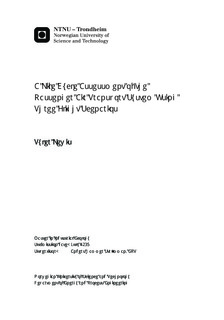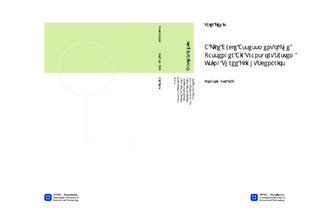| dc.contributor.advisor | Strømman, Anders Hammer | nb_NO |
| dc.contributor.author | Lewis, Tyler | nb_NO |
| dc.date.accessioned | 2014-12-19T11:51:17Z | |
| dc.date.available | 2014-12-19T11:51:17Z | |
| dc.date.created | 2013-10-08 | nb_NO |
| dc.date.issued | 2013 | nb_NO |
| dc.identifier | 654869 | nb_NO |
| dc.identifier | ntnudaim:10265 | nb_NO |
| dc.identifier.uri | http://hdl.handle.net/11250/235319 | |
| dc.description.abstract | The commercial aviation industry is drawing more and more attention from governments, international organizations and industry stakeholders as calls for improved environmental performance escalate and global concern to mitigate the production of greenhouse gas (GHG) emissions increases. International demand for commercial air transport is projected to steadily grow at a rate of 4.8% through 2036, which raises concern that emissions production will outpace related technological advancement. Additionally, aviation contributions of anthropogenic derived GHGs are already significant at an estimated 2% of global totals. To appropriately manage these issues, decision makers must consider the life cycle inventory of environmental impacts produced from various transport modes to design policies that effectively benchmark technologies and address environmental objectives. Unfortunately, it is often the case that tailpipe emissions act as the only indicators for entire system performance, which neglects necessary requirements of capital goods, supply chain services, infrastructure and vehicle manufacturing. The intention of this thesis is to assess environmental impacts of passenger air transport using a life cycle framework to provide a more comprehensive understanding of total environmental impacts. Using three different aircraft flight scenarios, total passenger, vehicle and vehicle lifetime impacts are modeled on a per kilometer basis. Results show that non-tailpipe GHG impacts are significant and constitute between 16-21% of the total. Findings demonstrate that shorter flights create the largest emissions per passenger kilometer travel due to the energy requirement of the landing and take-off cycle. Vehicle and vehicle lifetime perspectives facilitate an overall understanding of net environmental costs as a result of demand for transport services thus providing a more holistic representation of transport impacts. Individual life cycle phases are examined and results for non-GHG related impacts are also reported. | nb_NO |
| dc.language | eng | nb_NO |
| dc.publisher | Institutt for energi- og prosessteknikk | nb_NO |
| dc.title | A Life Cycle Assessment of the Passenger Air Transport System Using Three Flight Scenarios | nb_NO |
| dc.type | Master thesis | nb_NO |
| dc.source.pagenumber | 117 | nb_NO |
| dc.contributor.department | Norges teknisk-naturvitenskapelige universitet, Fakultet for ingeniørvitenskap og teknologi, Institutt for energi- og prosessteknikk | nb_NO |

